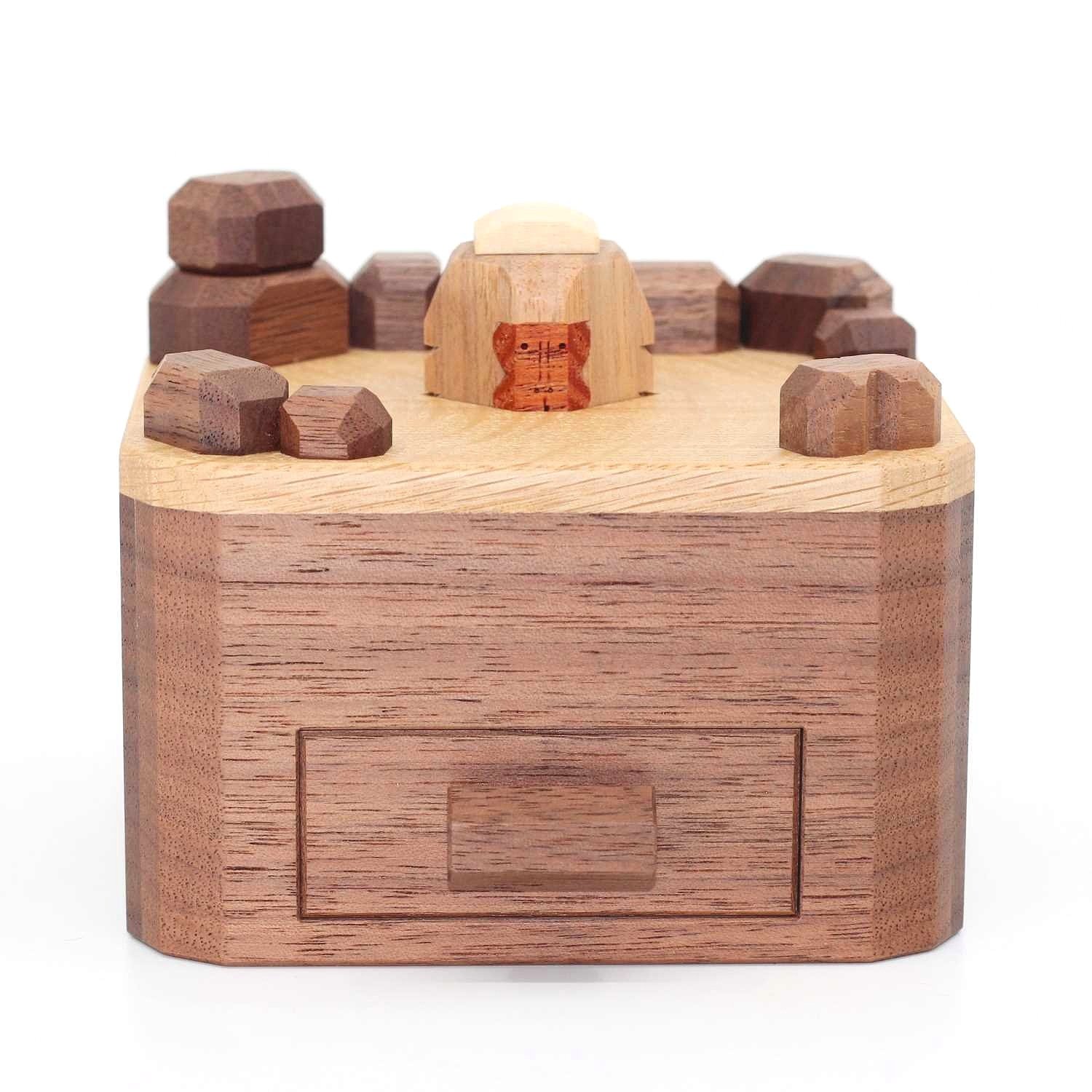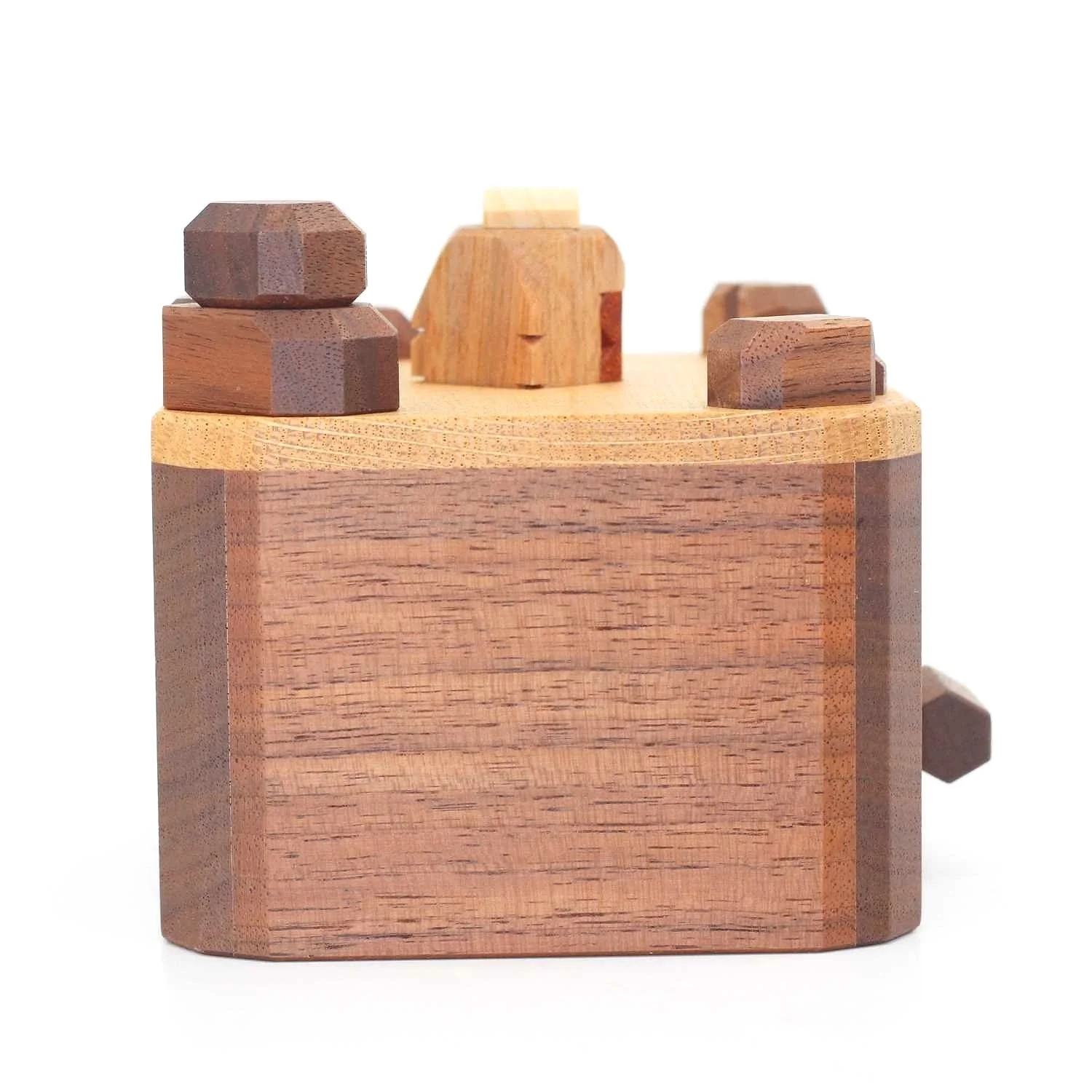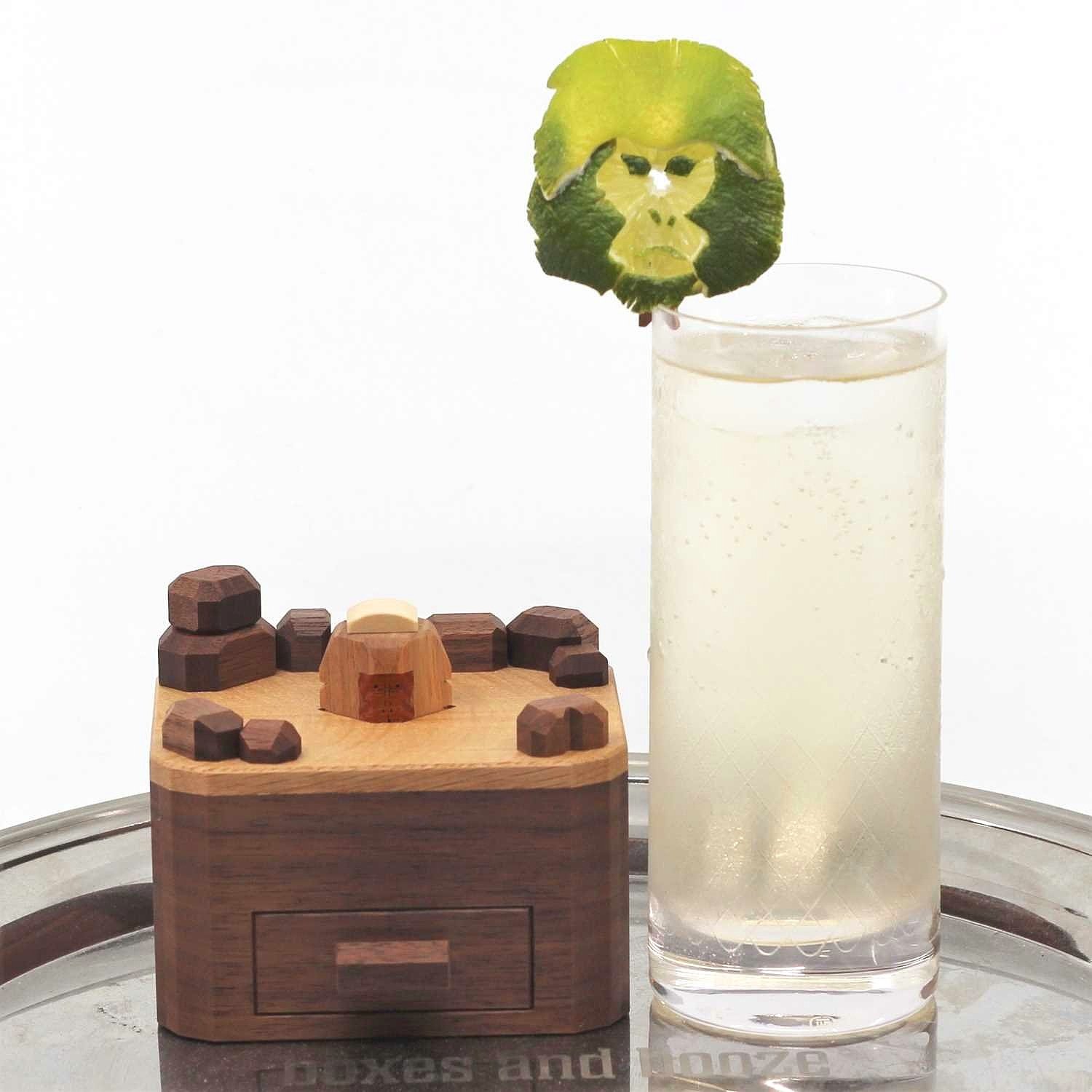Haute Springs
Onsen Monkey 温泉
Japan has a wealth of natural wonders, not least of which are the famed hot springs (onsen) found in mountainous regions which are caused by geothermal volcanic activity. These onsen are 25 degrees Celsius or hotter and contain at least one of nineteen specific minerals with purported health benefits. The Japanese Macaque, another national treasure also known as the Snow Monkey, populates the same mountainous regions which are home to the onsen. It’s no surprise that they enjoy taking a hot bath in their backyard. Who wouldn’t? The most famous place to watch the Macaques bath is at the Jigokudani Monkey Park in the forest of Yamanouchi, Nagano Prefecture, where a man-made hot spring provides the perfect setting.
Onsen Monkey by Yoh Kakuda
Thinking about something essentially “Japanese” led Karakuri Creation Group artist Yoh Kakuda to these iconic bathing monkeys. Kakuda loves to tell stories in his work, and almost always uses animal motifs. He explains the impetus of his design for the group’s most recent exhibition. “I imagined hot springs soon. Shiba Inu (one of the Japanese dogs) was also good but the open-air hot spring was better. I could imagine a monkey soaking in a hot spring and his face turning red. I felt the same world in the piece "Spring Night". Maybe this monkey is a little more comical world than the frog. Hot springs are nice, but I don't like to soak in them for too long. It is good to soak not too much. It is very nice the feeling of refreshment and having a beer after a hot spring. This monkey is teaching us that. (Maybe!)”
back of macaque stack
Kakuda’s Onsen Monkey is another beautifully rendered piece which easily captures the imagination. The scene is perfectly laid out and the central character is adorable. The box is quite tricky and mischievous, quite like I imagine the monkey would be in real life. The carefully crafted rocks were a challenge. “It was hard work to make many rocks! But I really needed rocks for an open-air hot spring.” One of the secret mechanisms also required careful tuning. “I was careful to make sure of the balance of the strength of springs. Otherwise, the mechanism would be easily discovered.”
The scene evolved a bit into the final version. “At first, I was thinking of an image of the monkey with sake on the tray in a hot spring. Next, the sake turned into another monkey. Finally, the other monkey disappeared in order to focus on the red faced monkey. I added the [sneaky mechanism] from the beginning! It is good to do once in a while. The hot spring was made from oak. The grain of oak looks like real ripples. It was very nice. The rocks and the box were made from black walnut and the monkey was made from walnut and chanchin. Walnut trees are good for expressing animal hair.”
bath path
Like all of Kakuda’s work, little details go a long way. He always learns something new with each project. In this case, he was able to express the monkey’s face just right by processing the wood diagonally. I think he got the features perfectly, as well as the story the box tells as it is experienced and finally solved. The flow of discovery is wonderful and the ending is a little startling, and makes you laugh. Kakuda mentioned that everyone in the group knew the secret right away, so it was hard to judge how people might react, but at least he had the ultimate stamp of approval: “Kamei said that Kakuda would make the monkey well.”
Toki Highball
While a cold beer would be a perfect accompaniment in the hot spring, I am toasting Kakuda’s homage to Japan with another classic Japanese drink, the whiskey highball. Although the cocktail is truly an American invention, Japanese culture adopted the practice over a century ago and turned it into a high art form of their own. One of the best examples is the Japanese highball, and how the most simple of drinks can become quite complex. A whiskey and soda seems hard to mess up, or improve upon, but what if the type of whiskey makes a difference? What if the ice matters, and the density of gas bubbles in the carbonation? What about the glass, the ratio of whiskey to water, the temperature and the garnish? Let’s not neglect the process, including the order of building these ingredients, the proper way to pour, and the all important stir, which can escalate to a theatrical performance.
don’t monkey around with your ingredients
Watching famed bartenders in Japan make a whiskey highball reveals this elevated, ritualistic process performed with zen-like focus. The highball truly took off in popularity in Japan after World War II thanks to the Suntory brand, which produced a Scotch style whiskey that was exceptional in a highball. They developed special machines to serve these at just the right proportions with ease, which also helped popularize the drink, although nothing can beat one made by a passionate bartender. In recent years, Suntory has developed the ultimate highball whiskey, Toki, a special blend from their Yamazaki, Hakushu, and Chita distilleries which features citrus and spice characteristic. This perfect blend took time to create, which is what Toki means. Despite the hype and pageantry associated with a “craft” whiskey highball, the real reason they are so popular in Japan is probably because, in reality, they are very easy to make, are the perfect light and refreshing drink for the hot months, and go well with all sorts of cuisine. There’s no need to monkey around with anything else – Kampai!
Japanese delights
Toki Highball
2 oz Suntory Toki
6 oz carbonated water
Place approximately 3-4 clear cubes of ice into a highball glass to the top. Add the whiskey and stir with a long handled bar spoon thirteen and a half times. Add more ice again if needed. Top with cold soda water, taking care to avoid breaking the bubbles by pouring down the side of the glass. Stir another three and a half times. Garnish with a lemon twist.
explore more:






